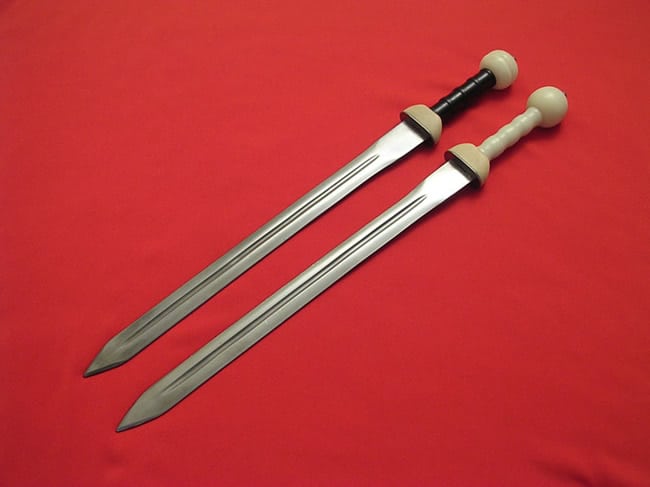by Mark E. Addo
Special to Outdoor Enthusiast Lifestyle Magazine
During Rome’s 2nd century B.C incursions into the Iberian Peninsula, its legions were introduced to the enemy’s sword of choice, the gladius hispaniensis. Knowing a good thing when they saw one, Roman designers moved on from earlier models of swords and adapted the gladius for common use.
During this period, equipment and training were standardized to include a bronze helmet, new projectile weapons, and the gladius.
Although the gladius design evolved down the centuries, basic aspects were retained. The double-edged blade of plus/minus 20 inches was retained. Hilts were fabricated of hardwood and boasted bone or wood grips. Upper and lower guards were spherical and hemispherical in shape respectively. Three basic types of the gladius are known to history.
Arguably most familiar to modern enthusiasts (and film fans) and the largest variant is the Mainz. It could reach twenty-two inches in length and tapered to an unforgiving point. It is safe to say that the Mainz was designed, at least in part, to take advantage of armor commonly worn by enemies of the empire. It would be carried in a metal-plated scabbard.
The Mainz was used by Julius Caesar’s legions during the period of the invasion of Britain.
The second version of the gladius, the Fulham, was shorter and of a more squarish design.
The Pompeii gladius represented a design change brought about, some historians argue, as a counter to new forms of enemy body armor. Further, the Pompeii lent itself readily to mass production. It would remain the standard legion sidearm for the duration of the period of empire.
It has long been argued that the gladius represents the chief strategic advantage enjoyed by legions as they conquered and maintained the empire. But a more sober assessment leads to the conclusion that it was the superior training, discipline, and tactics of the Roman army that, for all intents and purposes, facilitated world conquest.
And then of course there are the legionnaires, who without hyperbole may be appreciated as history’s first known professional soldiers. The age-old, consuming quest for personal glory became a secondary motive for service in the empire’s armed forces. Legionnaires fought for the glory of Rome even as they dreamt of noble retirement as veterans of the greatest fighting force then known to the world.
















